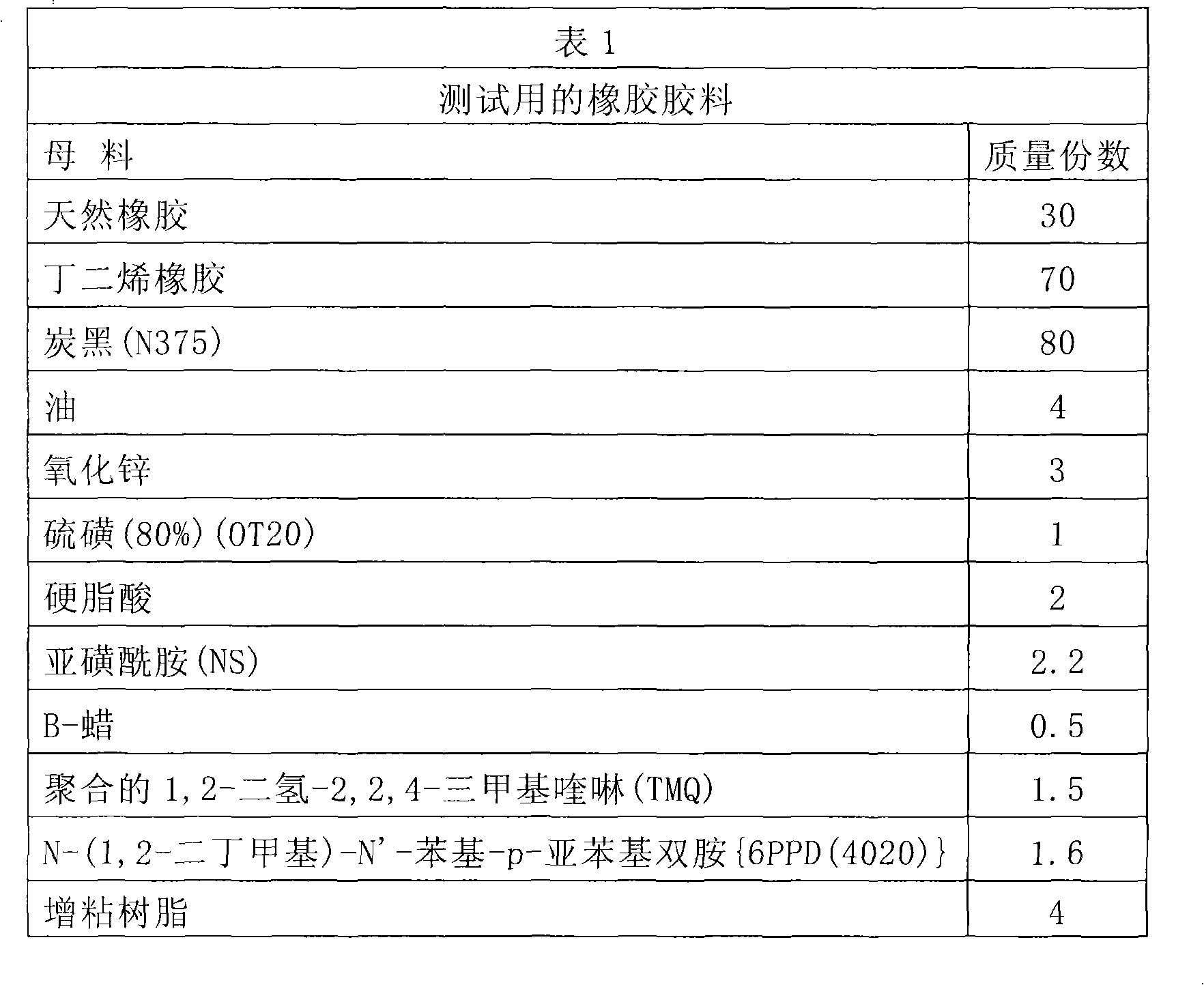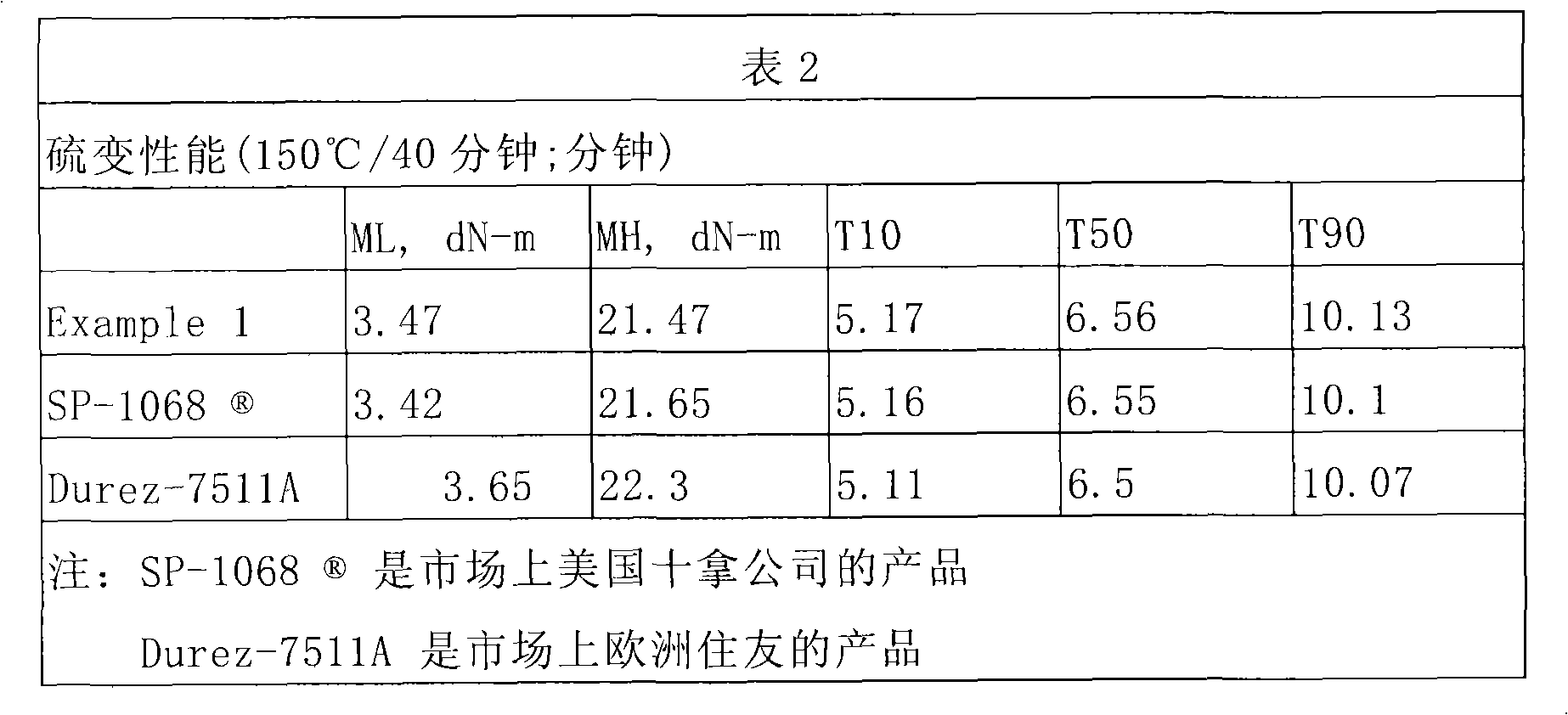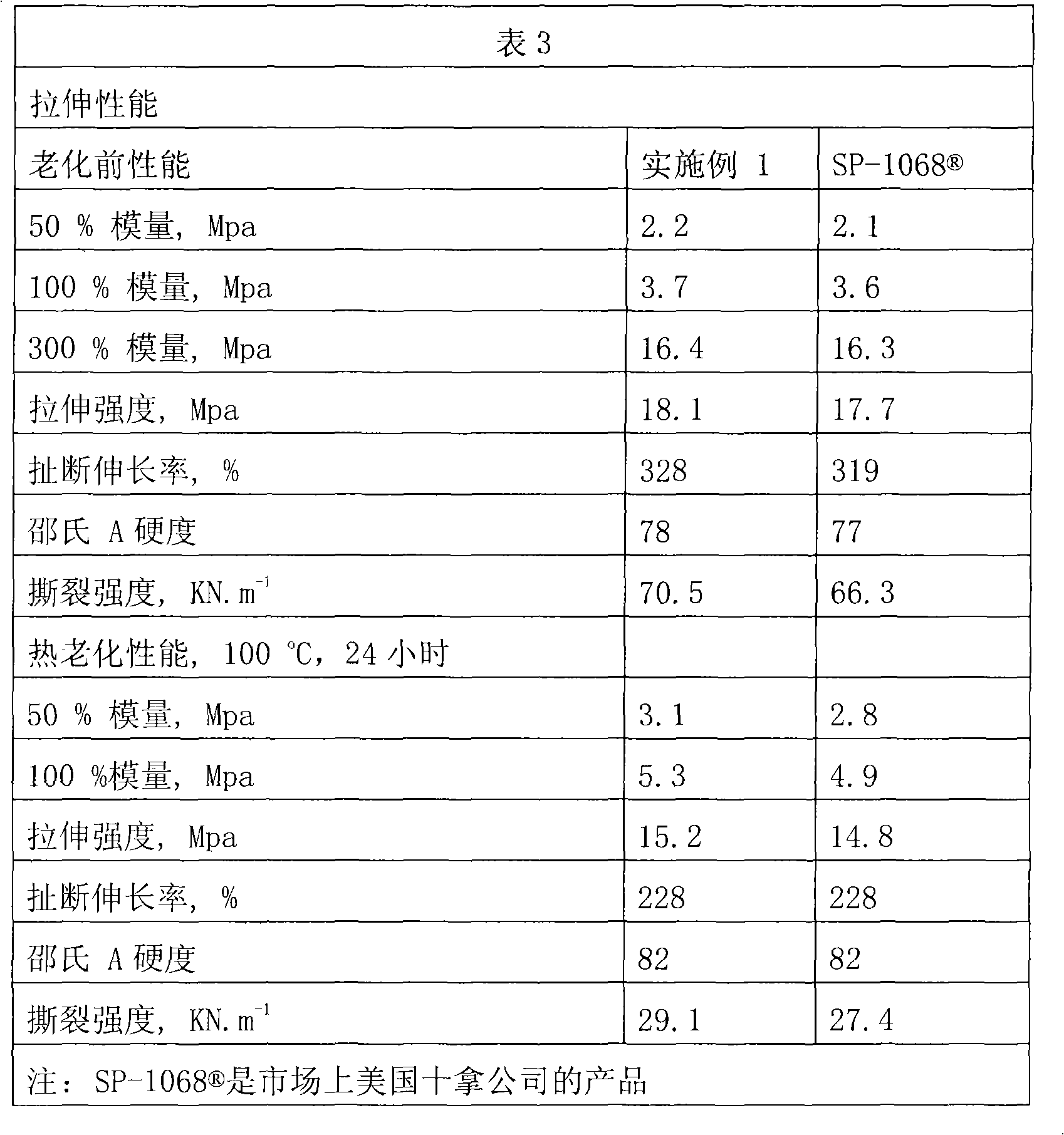Improved process for producing alkylphenols thermoplastic resin
A production process and technology of thermoplastic resin, applied in the rubber field, can solve the problems of low yield, high resin production cost, large amount of formaldehyde aqueous solution, etc., and achieve the effect of improving economy
- Summary
- Abstract
- Description
- Claims
- Application Information
AI Technical Summary
Problems solved by technology
Method used
Image
Examples
Embodiment 1
[0067] Synthesis of p-tertoctylphenol (PTOP)-formaldehyde (F) resin, dodecylbenzenesulfonic acid as catalyst, PTOP: F (molar ratio) = 1: 0.78; LF: SF (molar ratio) = 49: 51; LF1: LF2 (mass ratio) =34∶66
[0068] In a 500ml four-necked round-bottomed reaction flask equipped with a mechanical stirrer, thermometer, reflux condenser and dropping funnel, add 206g (1.0mol) p-tert-octylphenol (PTOP) and 0.3g dodecylbenzenesulfonic acid (catalyst), and heat the mixture to 80-110°C. Then, when the temperature was lower than 110° C., 10.9 g of aqueous formaldehyde solution (LF1, 0.13 mol) was added rapidly, and the reaction was refluxed for 15 minutes, and then the condenser was changed from the reflux mode to the distillation mode. Now add 12.91 g (0.396 mol) of solid paraformaldehyde (SF) at about 100-130° C., and control the solid aldehyde addition time for 30-60 minutes. Immediately after the addition of solid aldehyde, another formaldehyde solution (LF2, 20.3 g, 0.25 mol) was ...
Embodiment 2
[0070] Synthesis of p-tert-octylphenol (PTOP)-formaldehyde (F) resin, p-toluenesulfonic acid as catalyst, PTOP: F (molar ratio)=1:0.81; LF:SF (molar ratio)=60:40, LF1:LF2 (mass ratio)=35:65
[0071] In a 500ml four-necked round-bottomed reaction flask equipped with a mechanical stirrer, a thermometer, a reflux condenser and a dropping funnel, add 160g (0.776 moles) of p-tertoctylphenol (PTOP) and 0.2g of p-toluenesulfonic acid (PTSA, catalyst), and heat the mixture to 80-110°C. Then, when the temperature was lower than 110° C., 10.6 g of formaldehyde aqueous solution (LF1, 0.167 mol) was added rapidly, and the reaction was refluxed for 15 minutes, and then the condenser was changed from the reflux mode to the distillation mode. Now add 8.35 g (0.256 mol) of solid paraformaldehyde (SF) at about 100-130° C., and control the solid aldehyde addition time for 30-60 minutes. Immediately after the addition of the solid aldehyde was completed, another formaldehyde solution (LF2, ...
Embodiment 3
[0073] Synthesis of p-tertoctylphenol (PTOP)-formaldehyde (F) resin, dodecylbenzenesulfonic acid as catalyst, PTOP: F (molar ratio) = 1: 0.81; LF: SF (molar ratio) = 35: 65; LF1: LF2 (mass ratio) = 35∶65
[0074] Into a 500ml four-neck round bottom reaction flask equipped with a mechanical stirrer, thermometer, reflux condenser and dropping funnel, add 160g (0.776mol) p-tertoctylphenol (PTOP) and 0.34g dodecylbenzenesulfonic acid (catalyst), and heat the mixture to 80-110°C. Then, when the temperature was lower than 110° C., 6.4 g of formaldehyde aqueous solution (LF1, 0.078 mol) was added rapidly, and the reaction was performed under reflux for 15 minutes, and then the condenser was changed from reflux mode to distillation mode. Now add 13.15 g (0.403 mol) of solid paraformaldehyde (SF) at about 100-130° C., and control the solid aldehyde addition time for 30-60 minutes. Immediately after the addition of solid aldehyde, another formaldehyde solution (LF2, 11.9 g, 0.147 m...
PUM
| Property | Measurement | Unit |
|---|---|---|
| Softening point | aaaaa | aaaaa |
| Softening point | aaaaa | aaaaa |
Abstract
Description
Claims
Application Information
 Login to View More
Login to View More - R&D
- Intellectual Property
- Life Sciences
- Materials
- Tech Scout
- Unparalleled Data Quality
- Higher Quality Content
- 60% Fewer Hallucinations
Browse by: Latest US Patents, China's latest patents, Technical Efficacy Thesaurus, Application Domain, Technology Topic, Popular Technical Reports.
© 2025 PatSnap. All rights reserved.Legal|Privacy policy|Modern Slavery Act Transparency Statement|Sitemap|About US| Contact US: help@patsnap.com



